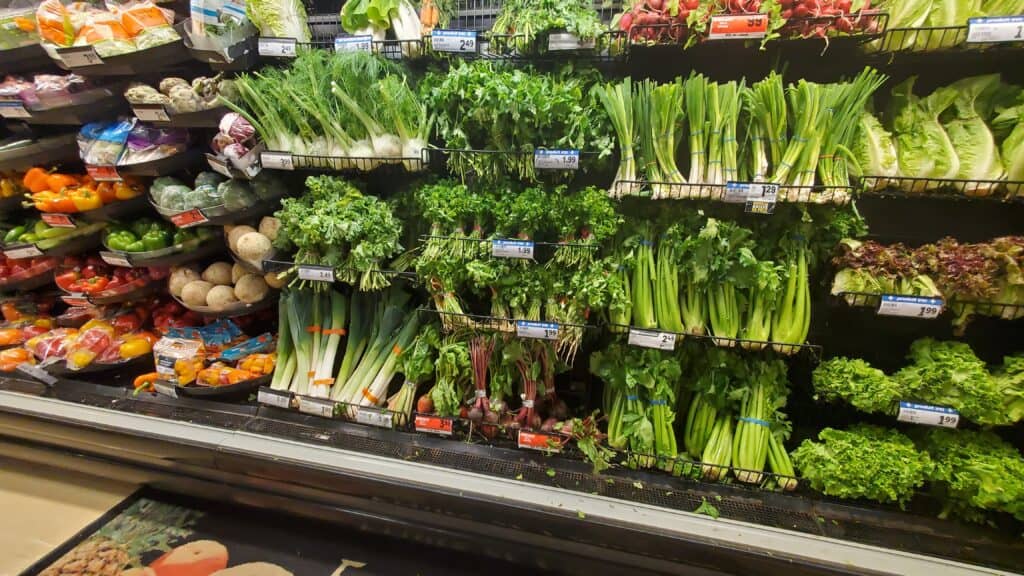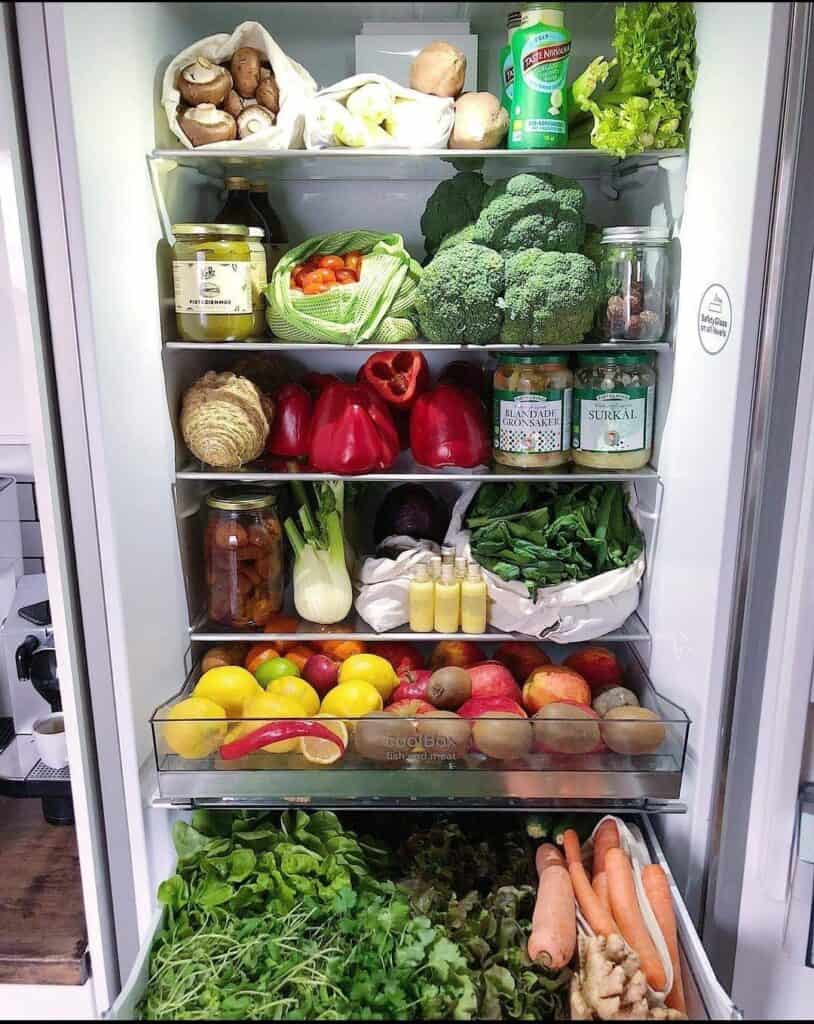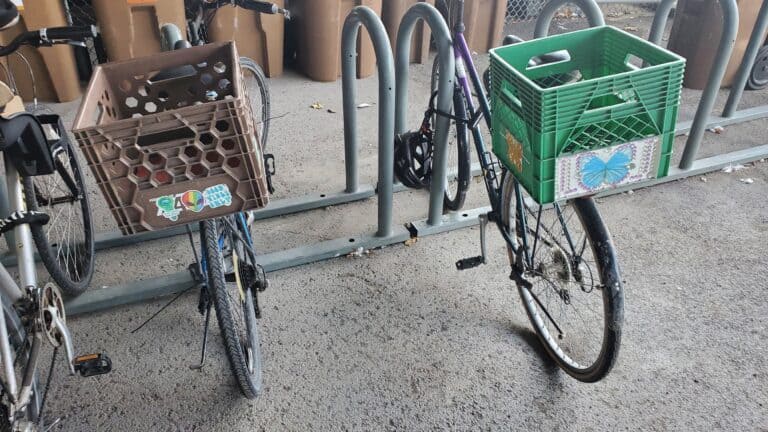How do you plan your grocery shopping?

The question how do you plan your grocery shopping is often asked by shoppers who are tired of overspending on their grocery shopping.
Nearly all of us have felt that way at some point.
The Importance of Optimizing Grocery Shopping
- It’s about saving money, maximizing your time and effort.
- You can reduce stress, minimize food waste, and ensure that you always have the ingredients you need on hand.
- You’ll be able to make better choices and stay in control of your spending.
Do you want to find a foolproof plan to save money and optimize your trips to the supermarket?
Let’s dive in.
Then how do you plan your grocery shopping?
1. Create a Weekly Meal Plan
Plan your meals for the week ahead. Knowing what you’ll eat each day can help you make a precise grocery shopping list.
I find out that every time I follow my weekly meal plan, I save time and money. I also avoid wasting food by only buying what I will use.
2. Inventory Check
After creating or adjusting my weekly meal plan, I check my pantry, fridge, and freezer.
I do this to prevent buying duplicates and to ensure I use what I already have before shopping for new food items.

3. Make a Shopping List
Based on your meal plan and inventory check, create a detailed shopping list.
For efficiency, I have categorized items of my shopping list by sections of the store.
The Benefits of Making a Grocery List
A grocery list is an essential tool for any shopper looking to optimize their grocery shopping experience.
It helps you stay focused, prevents impulse purchases, and ensures that you only buy what you need.
I found out that when I take a few minutes to plan my meals and create a list, I save both time and money.
When I use my well-organized shopping list, I stay on track with my dietary goals and avoid the frustration of forgetting essential items.
So, how can you create an effective grocery list?
Tips for Creating an Effective Grocery List
These are my step-by-step tips that helped me create my weekly grocery list:
- 1. Start by taking inventory: Before I head to the supermarket, I look at what I already have. I take note of items I already have and those that are running low.
- 2. Plan your meals: Meal planning is a game-changer when it comes to optimizing your grocery shopping. I take some time to decide what meals I’ll be preparing for the week ahead. Once I have meals planned out, I can easily identify the ingredients I’ll need to add to my shopping list.
- 3. Categorize your list: I organize my grocery list by categories such as produce, dairy, meats, pantry staples, etc. This will make it easier to navigate the supermarket and ensure that I don’t miss any items.
Tip: You can arrange the items in the order they appear in the store layout to save even more time.
| Category | Examples |
|---|---|
| Fresh Produce | – Apples – Lettuce – Tomatoes – Carrots – Broccoli |
| Deli | – Sliced turkey – Rotisserie chicken – Cheese platter – Potato salad – Pickled Egg Salad Sandwich |
| Bakery | – Baguettes – Croissants – Cupcakes – Fruit pies – Donuts |
| Meat | – Ground beef – Chicken breasts – Pork chops – Lamb racks – T-bone steaks |
| Seafood | – Salmon fillets – Shrimp – Cod fish – Lobster tails – Tuna steaks |
| Dairy | – Milk – Eggs – Butter – Yogurt – Cheese |
| Frozen Section | – Frozen pizza – Ice cream – Frozen vegetables – Frozen chicken nuggets – Frozen fruit |
| Inner Aisles (Packaged, Bottled, and Canned Goods) | – Canned soup – Pasta – Cereal – Canned vegetables – Peanut butter – Rice |
4. Meal Planning for Efficient Shopping
My meal planning is a crucial aspect of optimizing my grocery shopping routine.
Here’s how I make meal planning a breeze:
- 1. Set aside time for planning: Dedicate a specific day of the week to plan your meals. This could be a Sunday afternoon or any other day that works for you. Use this time to browse recipes, take note of ingredients, and create a schedule for the week ahead.
- 2. Consider your schedule: Take into account any upcoming events, work commitments, or social gatherings when planning your meals. This will help you choose recipes that are feasible to prepare on busy days and prevent food waste.
- 3. Get inspired: I use cookbooks, online recipe websites, and cooking apps to find new and exciting recipes. Don’t be afraid to try new ingredients or experiment with different cuisines.
- 4. Make a grocery list: Once you have your meals planned out, make a comprehensive grocery list. Refer to the previous section for tips on creating an effective list.
5. Set a Budget
Determine how much you’re willing to spend and stick to it.
A budget will help you prevent overspending on items you don’t need.
Strategies for Saving Money at the Grocery Store
Saving money at the grocery store doesn’t have to mean compromising on quality or taste. With a few savvy strategies, you can stretch your budget without sacrificing the food you love.
Here are some tips to help you make the most of your money:
- 1. Take advantage of sales and discounts: Keep an eye out for weekly flyers and online promotions. Plan your meals around the items that are on sale to maximize your savings. Don’t forget to sign up for loyalty programs and take advantage of digital coupons.
- 2. Buy in bulk: Consider purchasing non-perishable items in bulk. This is especially beneficial for pantry staples like rice, pasta, and canned goods. Buying in bulk can significantly reduce the cost per unit and save you money in the long run.
- 3. Shop seasonal and local: Seasonal produce tends to be more affordable and fresher. Visit your local farmers’ market or join a community-supported agriculture (CSA) program to support local farmers while enjoying high-quality, cost-effective produce.
- 4. Compare prices: Don’t settle for the first price you see. Take the time to compare prices across different brands and stores. Sometimes a little extra effort can lead to significant savings.
- 5. Avoid pre-packaged and convenience foods: Pre-packaged and convenience foods often come with a higher price tag. Instead, opt for whole ingredients and prepare meals from scratch. Not only will this save you money, but it will also result in healthier and tastier meals.
Shopping Hacks for Maximizing Savings
Let’s explore some of these hacks:
- 1. Use a shopping app: Many grocery stores have their own shopping apps that offer exclusive deals, digital coupons, and personalized recommendations. Download the app and take advantage of the savings at your fingertips.
- 2. Shop during off-peak hours: Avoid the crowds and long checkout lines by shopping during off-peak hours. This will not only save you time but also allow you to shop with ease and focus on finding the best deals.
- 3. Take advantage of loyalty programs: Sign up for loyalty programs offered by your favorite grocery stores. These programs often provide additional discounts, rewards, and access to special promotions.
- 4. Avoid shopping when hungry: Shopping on an empty stomach can lead to impulse purchases and unnecessary spending. Have a snack or meal before heading to the store to keep your hunger in check.
- 5. Stick to your list: Once you have your well-planned grocery list, stick to it! Avoid deviating from your list unless you come across a truly exceptional deal. This will help you avoid impulse purchases and stay within your budget.
How to Shop Smart and Avoid Impulse Purchases
Impulse purchases can quickly derail even the most well-planned grocery shopping trip. These unplanned purchases not only add to your overall spending but also contribute to food waste. To shop smart and avoid impulse purchases, follow these tips:
- 1. Shop with intention: Before entering the store, remind yourself of your goals – to save money, stick to your list, and avoid unnecessary purchases. Keep your focus on the items you need and resist the temptation to stray.
- 2. Practice mindful shopping: Slow down and take your time while navigating the aisles. Pay attention to product labels, prices, and nutritional information. This will help you make informed decisions and prevent impulsive buying.
- 3. Avoid the “endcap trap”: Supermarkets often place high-margin and impulse items on the endcaps of aisles to catch shoppers’ attention. Be aware of these tactics and resist the temptation to grab items that you didn’t plan to buy.
- 4. Use cash or a shopping budget: If you find yourself constantly overspending, consider using cash or setting a shopping budget. This will give you a visual representation of your spending and help you stay within your limits.
- 5. Stay strong at the checkout: The checkout area is filled with tempting snacks, candies, and magazines. Stay strong and resist the last-minute impulse items. Remember, you’ve already made a well-thought-out list, and sticking to it will keep you on track.
Using Technology to Optimize Grocery Shopping
Technology has revolutionized many aspects of our lives, and grocery shopping is no exception.
Here are some ways I use technology to my advantage, you can too:
- 1. Shopping list apps: Instead of relying on pen and paper, use a shopping list app to create and manage your grocery list. These apps often come with features like voice recognition, barcode scanning, and list sharing, making the process even more convenient.
- 2. Grocery delivery services: Take advantage of grocery delivery services offered by many supermarkets and online platforms. This eliminates the need for physical shopping and allows you to compare prices more easily. Some services even offer subscription options for additional savings.
- 3. Price comparison websites: Use price comparison websites to compare prices across different stores and find the best deals. These websites often provide real-time information on sales, discounts, and promotions.
- 4. Cashback and rebate apps: You can download cashback and rebate apps that allow you to earn money back on your grocery purchases. You simply scan your receipts or link your loyalty cards to start earning cashback on eligible items.
- 5. Recipe apps: Explore recipe apps that provide meal ideas based on the ingredients you have on hand. These apps can help you make the most of what’s already in your pantry and minimize food waste.
How Do You Plan Your Grocery Shopping on a Budget
Grocery shopping on a budget requires careful planning, discipline, and resourcefulness.
Here are some tips for grocery shopping on a budget:
- 1. Set a budget: I start by determine how much I can afford to spend on groceries each week or month. Once I have a budget in place, I stick to it as closely as possible.
- 2. Prioritize essentials: I identify the essential items I need each week, such as fresh produce and sources of proteins. Make sure these items are at the top of your shopping list and allocate a significant portion of your budget to them.
- 3. Embrace cost-effective ingredients: Explore cost-effective ingredients like beans, lentils, whole grains, and frozen fruits and vegetables. Incorporate them into your meal planning to stretch your budget.
- 4. Cook in bulk and freeze: Cooking in bulk allows you to take advantage of bulk discounts, save time, and have ready-to-eat meals on hand. Divide the cooked meals into individual portions and freeze them for later use.
- 5. Use leftovers creatively: Rather than letting leftovers go to waste, find creative ways to repurpose them into new meals. Leftover roasted chicken can be transformed into sandwiches or added to a salad, while cooked vegetables can be used in stir-fries or frittatas.
To conclude
I periodically review my grocery shopping habits to identify areas where I can improve and adjust my strategy accordingly.
Now it’s you turn to tell me how do you plan your grocery shopping.




